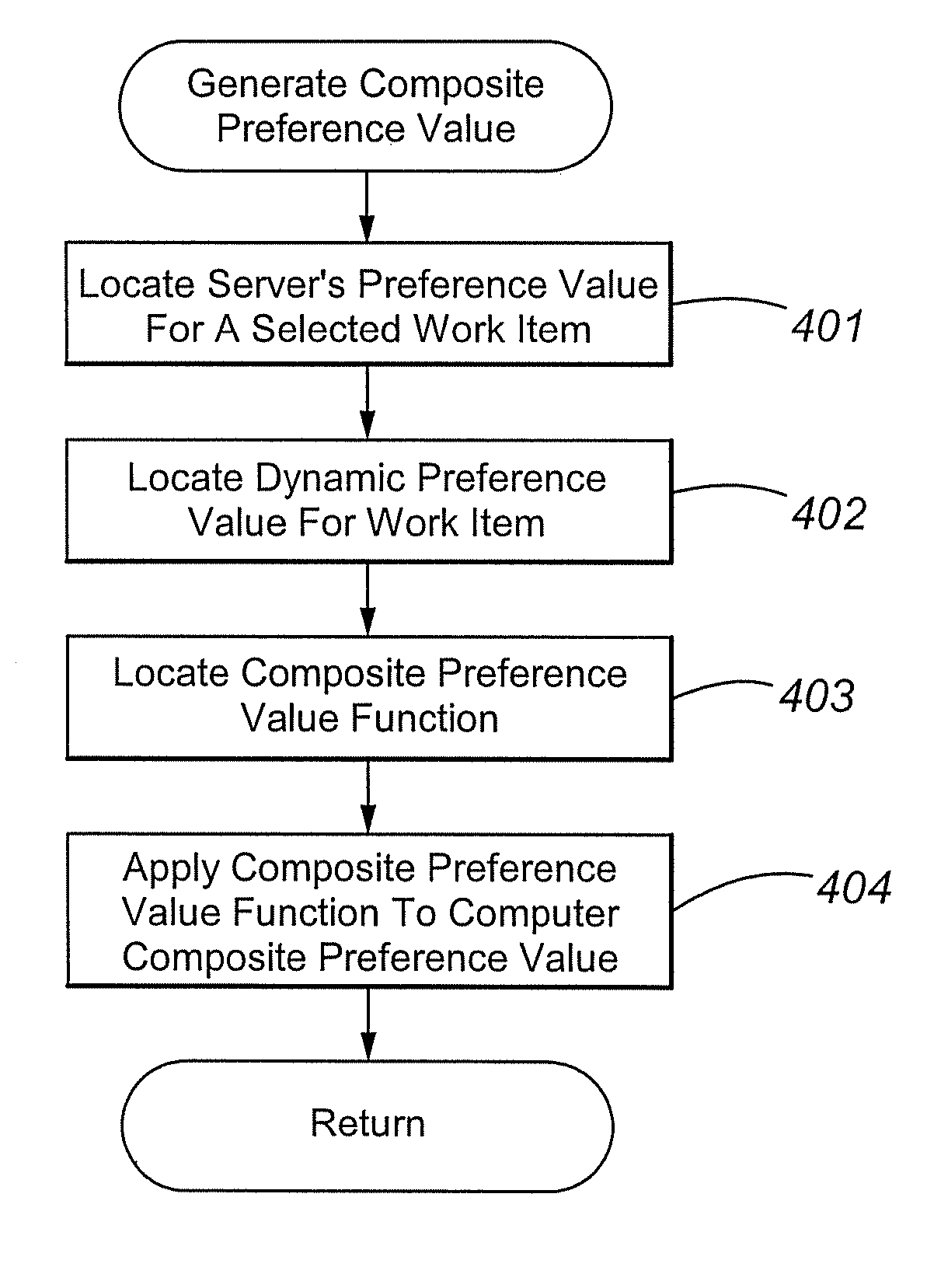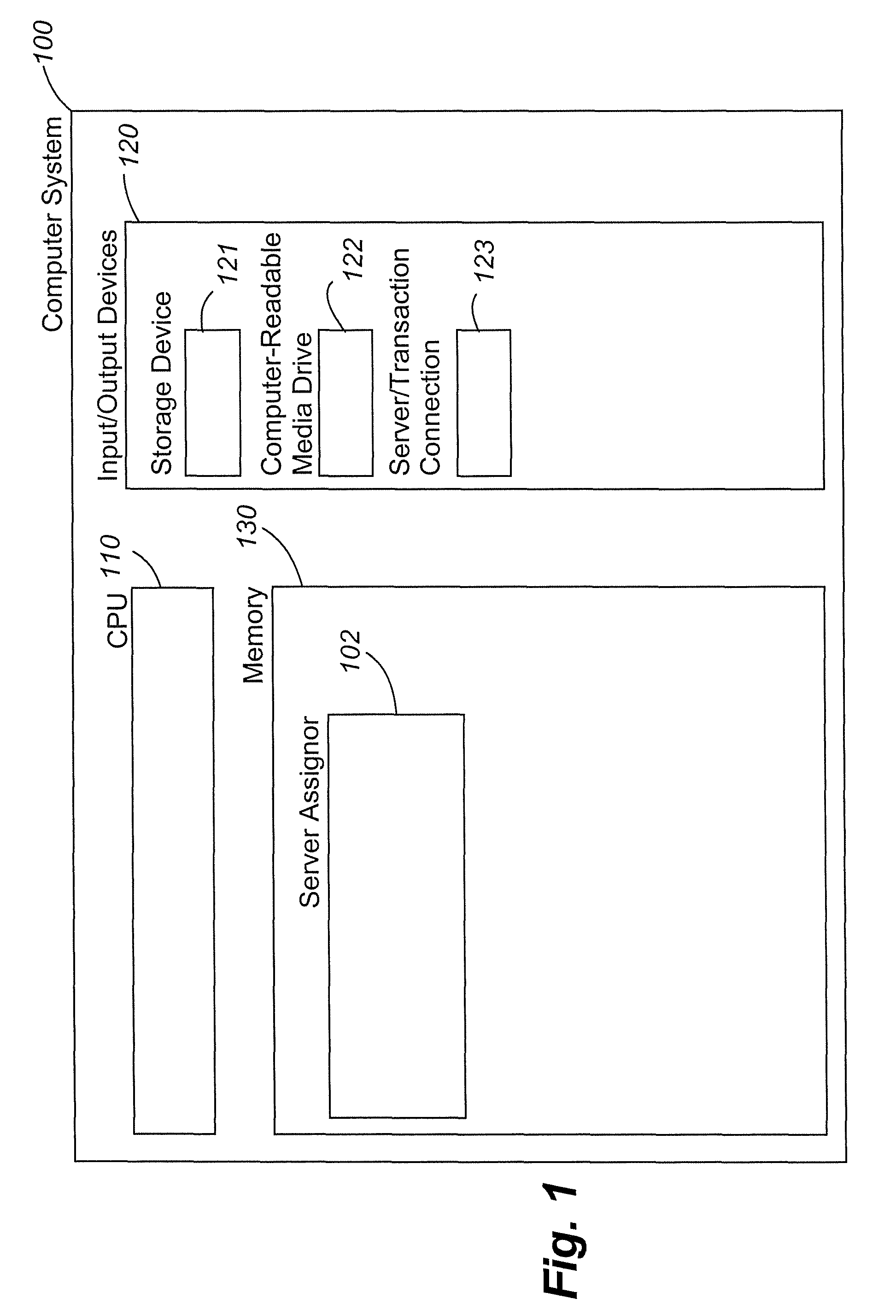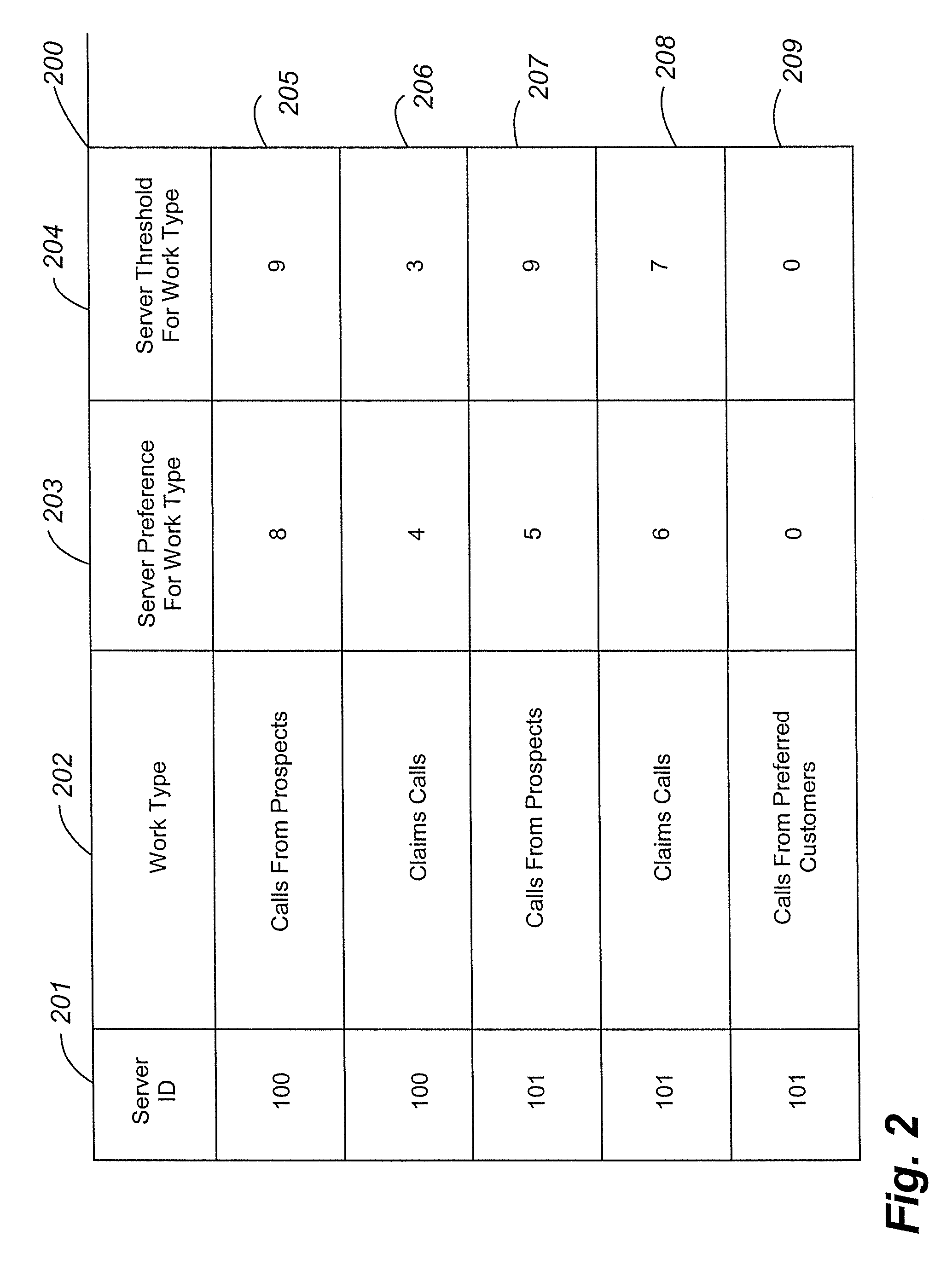Dynamically allocating server resources to competing classes of work based upon achievement of service goals
a technology of server resources and competing classes, applied in the direction of multi-programming arrangements, instruments, program control, etc., can solve the problems of unattained goals, no extra benefit is accrued, and use and labor costs
- Summary
- Abstract
- Description
- Claims
- Application Information
AI Technical Summary
Benefits of technology
Problems solved by technology
Method used
Image
Examples
Embodiment Construction
[0034]The present invention provides a facility for adjusting a pool of servers available for particular work types based on unmet service needs in a work processing facility in order to maximize the achievement of service goals. Servers may include service agents, both human and robotic. A server assignor and a corresponding server assignment method may each be employed in a work distributor to conditionally adjust the assignment of servers to server pools. A server pool represents a set of servers, each of which has a preference sufficient to render him available to perform a certain work type. A server can belong to none, one, or more server pools. An example of a common work distributor where work is incoming telephone calls is an automatic call distributor (“ACD”).
[0035]Each server has a preference value and a threshold value for different work types. The magnitude of a preference value represents an affinity for the associated type of work. The server's threshold value represe...
PUM
 Login to View More
Login to View More Abstract
Description
Claims
Application Information
 Login to View More
Login to View More - R&D
- Intellectual Property
- Life Sciences
- Materials
- Tech Scout
- Unparalleled Data Quality
- Higher Quality Content
- 60% Fewer Hallucinations
Browse by: Latest US Patents, China's latest patents, Technical Efficacy Thesaurus, Application Domain, Technology Topic, Popular Technical Reports.
© 2025 PatSnap. All rights reserved.Legal|Privacy policy|Modern Slavery Act Transparency Statement|Sitemap|About US| Contact US: help@patsnap.com



